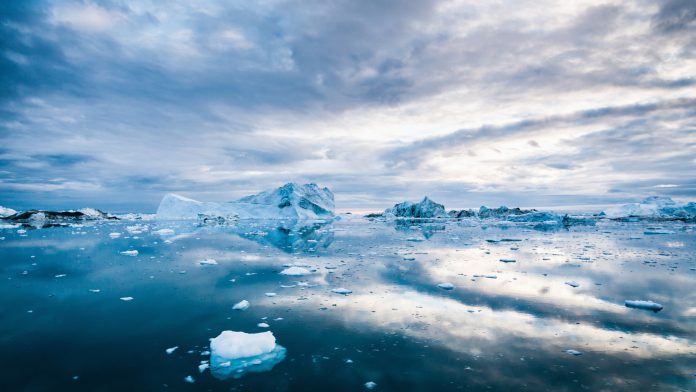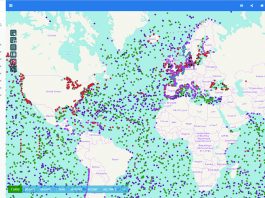As sea ice melts, it increases the amount of iodine-containing vapours reaching the atmosphere, which accelerates cloud formation in the Arctic. Scientists now believe that this cloud formation worsens climate warming in the region.
Scientists from the research network CLOUD have discovered that aerosol particles form rapidly from such iodine vapours, which can serve as condensation nuclei for cloud formation. The CLOUD researchers fear a mutual intensification of sea ice melt and cloud formation, which could accelerate the warming of the Arctic and Antarctic.
Depending on a variety of factors, clouds can cause the region below them to get warmer or cooler. Due to human influence, there are most likely more cooling effects from clouds today than in pre-industrial times, but how clouds contribute to climate change is not yet well understood. Researchers currently believe that low clouds over the Arctic and Antarctic, for example, contribute to the warming of these regions by blocking the direct radiation of long-wave heat from the Earth’s surface.
Clouds are formed by aerosols, suspended particles in the air, to which water vapour attaches. Such suspended particles or aerosols naturally consist of dusts, salt crystals or molecules released by plants. Human activities cause soot particles, sulphuric acid, and ammonia molecules to be released into the atmosphere, which can cluster and form new aerosol particles in the atmosphere.
Model calculations show that more than half of the cloud droplets are formed from aerosol particles that have formed in the atmosphere. For the formation of clouds, it is not decisive what the aerosol particles are made of. The most important characteristic to address is their size: Aerosol particles only become condensation nuclei for cloud droplets from a diameter of about 70 nanometres and up.
Aerosol particles from iodine-containing vapours
As published in a journal article titled ‘Role of iodine oxoacids in atmospheric aerosol nucleation‘, scientists from the CLOUD consortium have now studied the formation of aerosol particles from iodine-containing vapours. Every litre of seawater contains 0.05 milligrams of iodine, and when it enters the atmosphere, iodic acid or iodous acid is formed through sunlight and ozone.
The CLOUD team simulated atmospheric conditions in mid-latitudes and arctic regions in the CLOUD experimental chamber at the CERN particle accelerator centre in Geneva, including cosmic rays simulated by an elementary particle beam. They discovered that aerosol particle formation by iodic acid takes place very rapidly, much more rapidly than the particle formation of sulphuric acid and ammonia under comparable conditions. Ions produced by cosmic rays further promote particle formation. For the transformation of the molecular iodine into the iodine-containing acids, not even UV radiation and only a little daylight are necessary. In this way, very large aerosol quantities can be formed very quickly.
Atmospheric researcher Professor Joachim Curtius from Goethe University explained: “Iodine aerosols can form faster than almost all other aerosol types we know. If ions produced by cosmic rays are added, each collision leads to the growth of the molecular clusters. This is particularly important because global iodine emissions on Earth have already tripled over the past 70 years.
“A vicious circle may have been set in motion here: The pack ice thaws, which increases the water surface area and more iodine enters the atmosphere. This leads to more aerosol particles, which form clouds that further warm the poles. The mechanism we found can now become part of climate models, because iodine may play a dominant role in aerosol formation, especially in the polar regions, and this could improve climate model predictions for these regions.”









